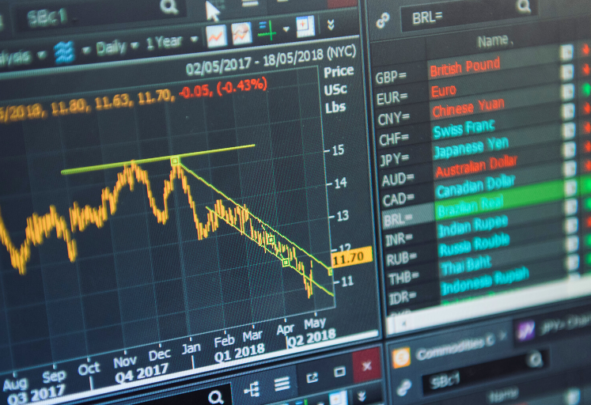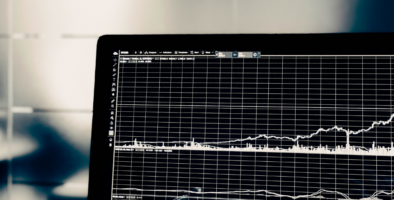What are Derivatives?
Before we can begin looking at different types and uses of derivatives-based risk management in detail, we first must understand what derivatives are, and then how derivatives are used. Simply put, a derivative is a form of financial tool that is reliant upon (or derived from) an asset (often referred to as the ‘underlying asset’).
Derivatives and risk management
Derivatives are most frequently traded in order to hedge (reduce risk) or speculate (increase risk with the aim of making a financial gain), and their value is set according to the supply and demand for the underlying asset.
Derivatives Management
At Czarnikow we primarily use derivatives linked to commodities and currencies, however markets are also available with the underlying asset as interest rates, market indexes and bonds.
Why do companies hedge risk using derivatives?
Derivatives can be used in a variety of ways: to hedge a position, to speculate on the future price movement of an asset, or to give leverage.
Historically, derivatives were created to facilitate global trade across different currencies. As goods were more frequently traded across borders, the need for a balanced exchange rate system became vital, as traders across the world needed a process to help them manage price differences dependent on currency. If, for example, a British investor whose accounts were in sterling wanted to purchase shares of a US company using dollars, they would be exposed to exchange rate risk – the value of the pound may drop or rise against the dollar across the period of investment, affecting the value of their investment. To eliminate this risk, the investor could buy a currency derivative in order to secure a fixed exchange rate and secure their funds.
What is meant by Derivatives, and the different types.
There are two ways which derivatives are executed: over-the-counter (OTC) or exchange traded. OTC derivatives make up the larger proportion of the derivatives market and are traded outside of an organised exchange or market – instead, they are traded directly between two parties. OTC trades can provide significant flexibility as the price and terms quoted for the asset can be altered based on the risk appetite, book position (the amount and type of trades held by that organisation) and market view of those involved. However, because of this, it can have a higher level of risk associated with it. In particular, this relates to counterparty risk, which is where there is a danger that one side of the agreement might default, meaning they do not fulfil the obligations set out in the agreement. An example of this would be not settling an account on an agreed date.
On the other hand, exchange traded derivatives are transacted on an organised exchange, for example the New York No.11 futures market, which is one of the major sugar markets. Here each counterparty transacts anonymously through the exchange and, through a system of initial and variation daily margin calls (effectively forms of deposit) which is managed by an institutional middleman known as a clearing house, the counterparty risk is significantly lower. The nature of an organised exchange means that there is full transparency over the amounts and prices of bids made and transacted (there is plenty of terminology about the different types of bid – look out for our glossary for more information).
Trading Derivatives
At Czarnikow, we execute our trades using a combination of exchange traded and OTC derivatives, combining exchange liquidity with over-the-counter opportunity to maximise value for our clients. We will go into more detail about these two types of trading methods in a separate blog.
Now to delve into more detail about specific types of derivatives. At Czarnikow we predominantly use futures hedging and options structures to manage risk for our clients – two tools which we will now explain in more detail.
Future Derivatives

What Are Futures?
Futures contracts are an agreement between two parties for the purchase and delivery of an asset, whether it be sugar, starch-based sweeteners, PET or dairy, at a pre-agreed price and date in the future. Futures contracts are standardised because they are traded on an organised exchange (more on the exchange here), which sets the terms of those contracts.
Hedging Derivatives
Traders can use futures to ‘hedge’ their risk or to speculate on the price of an underlying asset. Hedging is the process of insuring against a negative event or risk. Through securing a price that is deemed affordable for a purchase or sale in advance of delivery, the subsequent impact of price changes is avoided. As an example, white sugar futures (against which most global refined sugar trades are based) have traded between $875/MT and $300/MT since 2011 – the fluctuations between these levels will clearly have a significant impact upon both producers and buyers of this product. Importantly, the ability to secure future values gives producers and consumers the ability to independently hedge the market when levels are affordable (i.e. at different times for the buyer and seller), avoiding volatile spikes and troughs in price.
Future Derivatives: Example
This is all pretty abstract, so let’s go through an example to show what we mean. Company 1 needs sugar in October next year, and is concerned that the price will soon rise. To protect against this, they purchase an October sugar futures contract at $400 per MT (this transaction is known as the contract execution). This means that the seller on other side of the contract (let’s call them Company 2) is obliged to sell Company 1 that sugar at the set price of $400 per MT once the contract expires. The delivery method, quality and other terms will be defined by the exchange rules.
If, between the execution of the futures and the contract expiry, the price of sugar rises, Company 1 can decide whether to sell the contract at a profit, or to receive delivery of the sugar at a price below where the prevailing market is at. If the former, Company 1 can sell this contract to Company 3 at the prevailing higher price than when they first bought at and retain the profit. At expiry, Company 2 now delivers the sugar to Company 3, with each paying the levels at which they executed the futures.
With this example, both Company 1 and Company 2 were most likely hedging risk but for different reasons. Company 1 needed sugar in the future and wanted to insure against the risk of the price rising in October next year by purchasing a futures contract. Company 2 needed to sell their sugar and were happy with the current levels offered on the market. Both parties therefore mitigated their risk by executing a futures contract and securing the market price.
In that example, the contract was settled with the physical delivery of the underlying asset (the sugar). However, this is not always the case. Many traders hold positions and cash settle (closing the contract without taking delivery of the physical good) before expiry, meaning any profit or loss on the trade is settled as a positive or negative cash flow to the traders’ accounts. As long as these positions are closed off (buying or selling to bring the number of contracts you hold back to zero) before expiry, the traders involved are fulfilling their contractual obligations and won’t have unexpected tonnages arriving in inconvenient places (and therefore this approach particularly suits speculative traders who have no interest in receiving or selling the underlying asset). Many futures contracts do not suit physical delivery (lean hogs are a good example of this) and so are cash settled as standard rather than physically delivered. Here, even futures that are left open until expiry are settled based on the difference between the price at which the hedge was executed and the price when the market expires.
[banner text=”Looking to buy or sell sugar?” button=”Find out more” link=”/services/commodities-trading”]
Using Option Structures

What Are Options?
Options are a type of derivative, and therefore are also specifically linked to an underlying asset. However, the Buyer of an option has the choice of whether or not to receive futures relating to an asset at a predetermined price, volume and expiry date in the future. For this privilege the Buyer must pay a premium, which is received by the option Seller.
The value of the option premium which must be paid by the Buyer depends on several factors. The current market price of the underlying asset, the price that the option is agreed at (the strike price), the market volatility, the amount of time until expiry, and external macroeconomic factors will all impact the premium a Buyer would need to pay the Seller.
Again, let’s look at an example of how this works. A manufacturer decides that they will produce a product containing sugar, as long as the price of sugar remains below a certain level. In this example the futures market is pricing sugar at an affordable level for the manufacturer. Despite this, the manufacturer does not want to use futures to hedge the price at this time, as they are not certain of the production amount. Hedging this price risk exposure using options makes sense – the manufacturer secures an option to buy sugar at a price above the current market value, but below their budgeted level (this agreed price level is known as the strike price) and pays a relatively small premium for it. The Seller of the option is happy as they have received a premium for a relatively unlikely scenario – that the market will trade higher than the strike price. If this does happen then the Buyer can either receive delivery of sugar once the underlying futures expire at the option strike price or sell the futures at prevailing market levels and take the profit. Option contracts can expire into either a cash settlement or to an underlying future. In the case of sugar, the options contract settles in advance of the futures contract. This means that the option holder receives the underlying futures at the option expiry. This gives the option holder the choice between waiting for the futures to expire and receiving physical delivery or selling them at the prevailing market rate. If the option expires and the market price is lower than the strike price then the option is redundant, and the Buyer can cover the futures at the affordable market price if they choose to produce. The only downside for the Buyer here is that they do not recover the option premium paid.
Finally, by combining different types of options, market opportunities can be unlocked that are otherwise unable to be accessed through more straightforward hedging solutions (often referred to as vanilla hedging). These more complex structures include Collars, Three-Way Option strategies and Accumulators. The latter can offer a Buyer or Seller preferable rates when compared to the market, with a certain amount of coverage secured per day depending on the amount of market movement. These structures can be especially useful for Buyers or Sellers of a commodity who have a specific view on the market (whether they think the price will go up or down in the future) or have a variable level of coverage to secure depending on a specific price target. Accumulators and other futures and option structures play a large role in the bespoke risk management strategies created by Czarnikow for our clients, but we will only put them in place when we see real value over more simple structures.
Hedging Through Derivatives
As you can see, hedging through derivatives gives the opportunity to minimise risk and secure opportunities for businesses. We will be covering more aspects of derivatives trading in separate blogs, and if you’d like to find out more about our service you can do so here.
Author: Carys Wright



